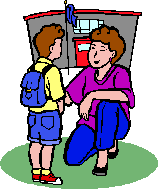





| |
Constant kindness can
accomplish much. As the sun makes ice melt, kindness causes misunderstanding,
mistrust, and hostility to evaporate.
Albert Schweitzer
Kindness is a drive to assist a person, animal, or object. We can
differentiate kindness from other types of benevolence:
 |  Kindness is based in an action. It arises from our internal state,
thoughts, emotions, and feelings. Kindness is usually not identified as such
until we express that internal state, with an act of kindness. Kindness is based in an action. It arises from our internal state,
thoughts, emotions, and feelings. Kindness is usually not identified as such
until we express that internal state, with an act of kindness. |
 | Kindness is generally associated with small, nonessential gifts. If we
give a lollipop to a child, that is kindness. In contrast, if we give $100
to a starving man, that can be called charity. |
 | Kindness does not require reciprocity, we do not expect anything in
return, although we appreciate a thank you or a smile from the recipient of
our kindness. |
 | Kindness is an act of anonymity. Sometimes we commit acts of kindness for
people whom we do not meet. Even when our identity is known by the
recipient, we do not linger to accept any acclaim beyond the person's smile
or a word of gratitude, kindness is usually hit and run. |
 | Kindness is generally a spontaneous act. We see a need, and we fulfill it
immediately. |
Techniques for developing kindness.
 | Design-work. We can generate energy tones such as compassion and
caring.
 | Modeling. |
 | Affirmation. "I enjoy being kind to people." "When I
am kind, I am happy". |
 | Directed imagination. We can visualize ourselves performing acts of
kindness. |
|
 | Intuition. Intuition can guide us in the words and actions by which we
express kindness, and intuition can tell us when our action would not be
appropriate.
 | This person can need to work out the problem alone. Our kindness
would be viewed as meddling, co-dependent, or an intrusion into the person's
privacy. |
 | We need to tend to our own responsibilities.
We cannot spend all of
our time helping other people. |
 | Specific actions can be inappropriate. Our act of kindness may be to
give ice cream to a child, but the child's parent may not want us to do
that. |
|
 | We can perform acts of kindness toward many things such as friends,
neighbors, strangers, drivers in heavy traffic, animals, and plants. |
 | We can perform verbal acts of kindness. We can compliment people, and we
can congratulate them, and we can help people to see a humorous viewpoint in
difficult circumstances. These verbal acts can be spoken or written, in an
E-mail, or a greeting card, or a note, or another form. |
 | We can perform physical acts of kindness. We give hugs, and we smile, and
we assist people who are carrying heavy luggage. |
 | We can be prepared to commit acts of kindness.
 | We can buy the equipment. We can have tools and jumper cables in our car,
to assist motorists. We can have a city map, to help people who are lost. |
 | We can acquire the training. We can learn how to do basic car repairs. We
can learn first aid including CPR. |
|
 | We can develop mindfulness to the needs of others. We observe the people
around us, and help the short woman who is trying to reach a product on the top
shelf at a store. |
Next topic: Success
|
